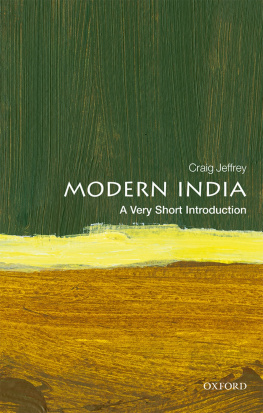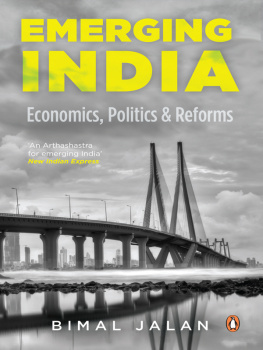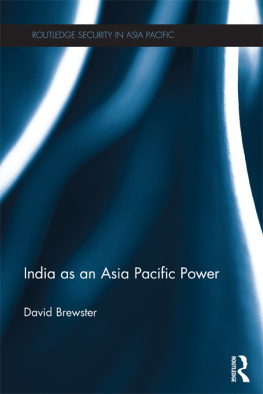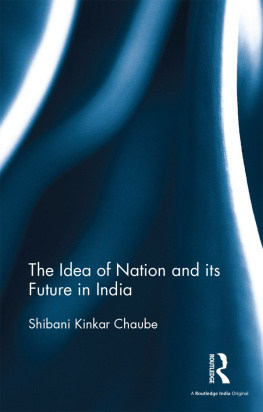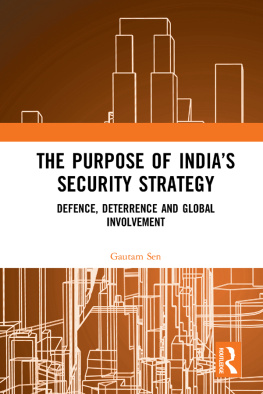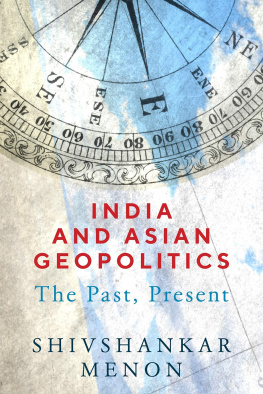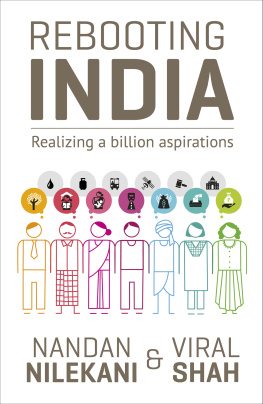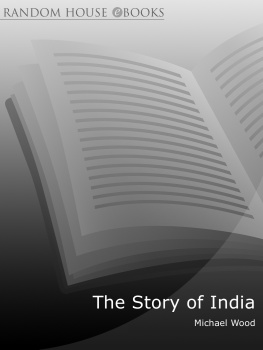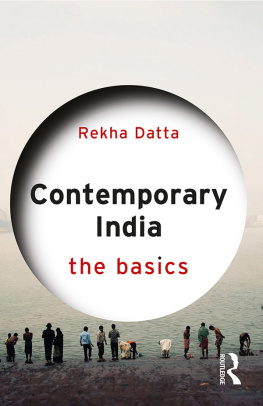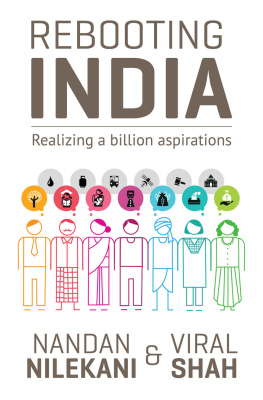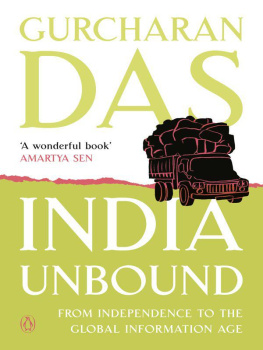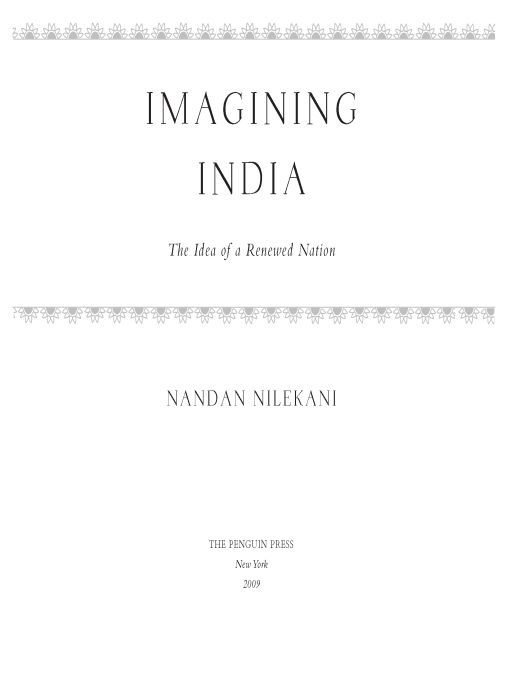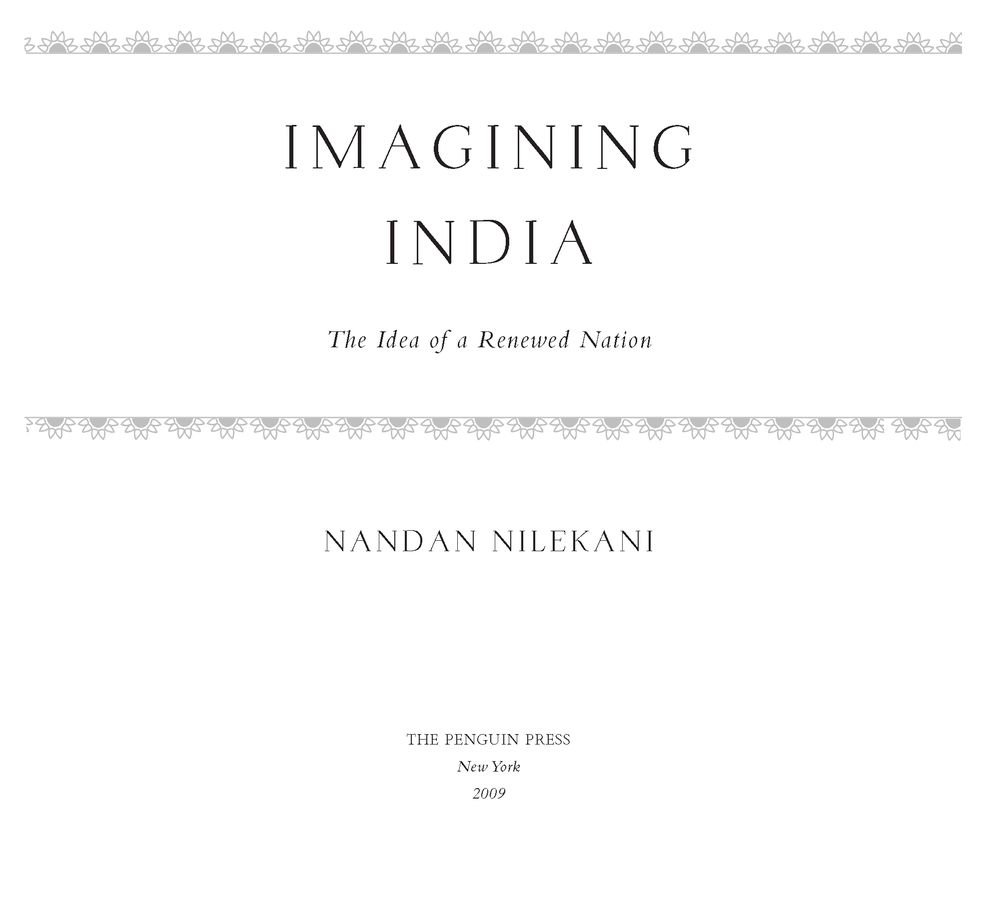Table of Contents
For
Nihar, Janhavi and Rohini,
who keep me grounded
FOREWORD
EVERY TIME I go to India, people ask me about China. Every time I go to China, people ask me about India.Whos going to win between these two emerging giants?
I always give them the same answer: India and China are like two giant superhighways, and each has a big question mark hanging over its future. The Chinese superhighway is perfectly paved, with sidewalks everywhere and streetlights and white lines neatly down the middle of the road. Theres just one problem. Off in the distance, there is a speed bump called political reform. When 1.3 billion people going 80 miles an hour hit a speed bump, one of two things happens. One is that the car jumps into the air, slams down, and the drivers and passengers turn to each other and say, You okay? You okay? Everyone is okay, and so they drive on. The other thing that happens is that the car jumps up in the air, slams down, and all the wheels fall off. Which will it be with China? We dont know, but I am hoping for the bestthe stability of the world depends upon it.
India is also a giant superhighway, only most of the road has potholes, some of the sidewalks havent been finished, a lot of the streetlights are out, and there are no visible lane dividers. Its all a bit chaotic, yet the traffic always seems to move. But wait a minute. Off there in the distance it looks like the Indian road smoothes out into a perfect six-lane superhighway, with sidewalks, streetlights, and white lines. Is that perfect Indian superhighway a mirage or is that an oasis? Will India one day claim its future or will it always be chasing it, teasing us with its vast potential?
My teacher and friend Nandan Nilekani is bound and determined to make sure it is not a mirage. Like me, he remains an optimist, a sober optimist, but an optimist about his countrys future. He knows that the shape of Indias future, as the great environmentalist Dana Meadows once said about the future of our planet, is a choice not a fate. And this book is a loud, engaging, noisy, spirited argument about how and why India and its friends need to go about making the right choicesand never resign themselves to fate.
I can think of no one better to make this argument. There are not a lot of executives around the world who are known simply by their first names. Silicon Valley has Steveas in Jobs. Seattle has Billas in Gates. Omaha has Warrenas in Buffett. And Bangalore has Nandanas in Nilekani.
Nandan helped to found Infosys Technologies Ltd., based in BangaloreIndias Silicon Valley. And Infosys, Wipro, and Tata Consultancy Services are the Microsoft, IBM, and Sun Microsystems of India. What makes Nandan unique? For me it comes down to one moniker: great explainer. Yes, he, the other cofounders, and N. R. Narayana Murthy, Infosyss legendary chairman, have built a great global company from scratch. But the reason Nandan is so sought out is that he has a unique ability not simply to program software but also to explain how that program fits into the emerging trends in computing, how those trends will transform the computing business, how that transformation will affect global politics and economics, and, ultimately, how it will all loop back and transform India. It was his insight that the global playing field was being leveled by technology that inspired me to write my own book The World Is Flat. And nowhere are his explanatory skills more on display than in this, his first book.
While this book is an enormously valuable explainer of where India has been and needs to go, it is much more than that. It is a prod to his fellow Indians, and Indias American friends, to imagine and deliver on a different future by refusing to settle anymore for an Indian politics and governance that is so much less than the talents possessed and needed by the Indian people. Nandan knows what Indian entrepreneurs have accomplished without government or in the face of government obstruction and political dysfunction. He knows what sort of energy is exploding from Indias youth bubble. And on every other page I can almost hear him saying: If only our political system performed with the same energy and high aspirations. India would be unstoppable. It would be unstoppable. It would be that smooth six-lane superhighway. India, he rightly insists, despite its age and size, has barely scratched its potential.
In some ways Nandans views are summed up in this one passage: At the time of independence, Indias leaders were clearly ahead of the people. The creation of a new, secular democracy with universal suffrage, anchored by the Indian Constitution, was a leap of faith the government took with an uncompromising, yet trusting country. Sixty years on, however, it seems that the roles have reversed. The people have gained more confidence and are reaching for the stars. Indias leaders, however, seem timorousour politics has become more tactical than visionary and, as Montek points out, what we now see among our politicians is a strong consensus for weak reforms.
Nandan repeatedly and usefully reminds us that Indias economic revolution since 1990 has been a people-driven transformation. It has actually been, in its own way, the biggest peaceful revolution in the last sixty years. It has never quite gotten its due because it happened peacefully and in slow motionand the people did not topple a monarch or bring down a wall. But it did involve a society throwing off something hugethrowing off the shackles of a half-century of low aspirations and failed economic ideas imposed from above and replacing them with its own energy and boundless aspirations. And it wasnt just the famous software entrepreneurs like Nandan who were engaged. They started it. They showed what was possible. But they were soon followed by the farmers who demanded that schools teach their children more English and the mothers who saved for their kids to have that extra tutoring to get into a local technology college and by the call center kids, who worked the phones at night and hit the business school classrooms by daysleeping God only knows when in between. It was the revolution of a post-Nehruvian youth bubble that refused to settle anymore for its assigned role or station in life. That is what makes this Indian peoples revolution so powerful and that is what makes it, as Nandan tells us, irreversible.
To be sure, this book does not ignore Indias massive income inequalities and challenges in job creation. It simply says that to get there will require the courage and optimism to embrace good ideas and not remain imprisoned by bad ones. It is all about execution. It is not enough, Nandan insists, to get the ideas right; they have to be adopted. And it is not enough to adopt them; they have to be implemented correctly. And it is not enough to implement them correctly; they have to be constantly reviewed and adjusted over time as we see what works and what doesnt.
Nandan Nilekanis life and book are testament to the fact that the new India has truly arrivedin many ways and many places. Yes, the new India, he declares, is now present in the business community. It is now present on the college campuses. It is now present in many villages. It is now present in many schools. But will it achieve a critical masswill it spread so far and wide, so up and down, that it will truly add up one day to that smooth, sleek superhighway? Or will that India always remain just off in the distance?


